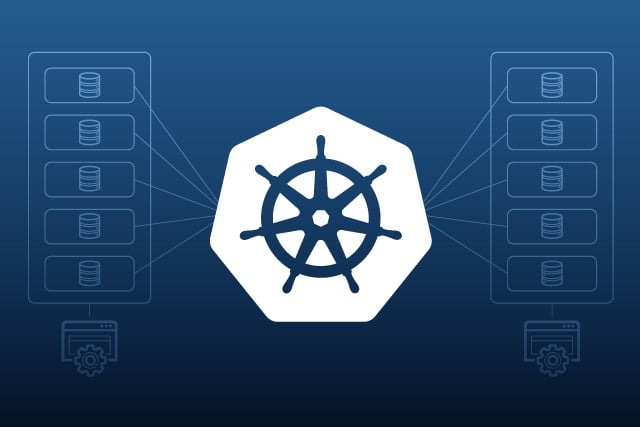
Kubernetes Deployment Strategies 📦
- Published on
- Authors

- Author
- Ram Simran G
- twitter @rgarimella0124
] In the world of cloud-native applications, Kubernetes has emerged as the de-facto standard for container orchestration. While it provides immense flexibility in deploying applications, choosing the right deployment strategy is key to ensuring smooth rollouts, minimizing risk, and maximizing availability.
Below is a deep dive into the six most common Kubernetes deployment strategies, with a focus on when to use them and when not to.
1. 🔁 Recreate Deployment
How it works:
The existing version (V1) of the application is completely shut down before the new version (V2) is deployed.
Downtime: ❌ Yes
Use case:
- Simpler applications where short downtime is acceptable
- Database schema updates that require exclusive access
- First-time deployments or major version upgrades
When not to use:
- Production environments where high availability is critical
- Services with strict SLA requirements
- Applications that are latency-sensitive
Pros:
- Simplicity
- Clean deployment
Cons:
- Downtime during deployment
- Risky if the new version fails
2. 🔄 Rolling Update
How it works:
The new version (V2) is deployed gradually by replacing instances of the old version (V1) one at a time, managed by the Kubernetes deployment controller.
Downtime: ✅ No
Use case:
- Most common strategy for production environments
- Gradual transitions for services with live users
- When you want to avoid downtime but don’t need advanced routing
When not to use:
- When instant rollback is required and rollback time matters
- When traffic must be split more precisely between versions (e.g., for testing)
Pros:
- No downtime
- Simple and automated by Kubernetes
Cons:
- Rollbacks can take as long as rollouts
- Hard to test new features without affecting users
3. 👥 Shadow Deployment
How it works:
Incoming requests are mirrored to both V1 and V2, but only V1 responses are returned to users. V2 runs in the background to observe performance and correctness.
Downtime: ✅ No
Use case:
- Testing real-world traffic on the new version without user impact
- Observing behavior in production environments before a full release
- Validating compatibility, performance, or logs
When not to use:
- When resource cost is a concern (you’re running both versions in parallel)
- If the application has side effects (e.g., sends emails or triggers payments)
Pros:
- No impact on users
- Great for testing in production
Cons:
- Higher resource usage
- Setup can be complex (duplicate traffic routing)
4. 🐥 Canary Deployment
How it works:
A small percentage of users (e.g., 25%) are routed to the new version (V2), while the rest continue using the old version (V1). Traffic is increased gradually as confidence grows.
Downtime: ✅ No
Use case:
- Critical services where you want to minimize the blast radius
- A/B testing features in real-world usage
- Gradual rollouts with observability and rollback mechanisms
When not to use:
- When you need quick full rollouts
- Applications that can’t maintain parallel versions
Pros:
- Limits exposure of bugs
- Easy to roll back
Cons:
- Slightly complex to configure and monitor
- Can increase cost temporarily
5. 💚💙 Blue-Green Deployment
How it works:
Two separate environments (blue and green) are maintained. Only one is live at a time. Traffic is switched from V1 (blue) to V2 (green) in a single cutover.
Downtime: ✅ No
Use case:
- Environments where rollback speed is critical
- Releases with major configuration or infrastructure changes
- When you need to test the full system before switching
When not to use:
- If resources are limited (requires double the infra temporarily)
- Rapid deployment cycles (too heavy)
Pros:
- Instant rollback
- Clear separation between versions
Cons:
- Costly
- Complex to manage infrastructure state (e.g., databases)
6. 🧪 A/B Testing
How it works:
Different versions (V1 and V2) are served to users based on predefined segments (e.g., user region, browser type, etc.). Both versions are live and collecting feedback.
Downtime: 🚫 Not Applicable
Use case:
- Experiments and feature testing
- Gathering user feedback and behavior
- Personalization
When not to use:
- If your application can’t support multiple active versions
- When results don’t need segmentation
Pros:
- Highly controlled experimentation
- Detailed performance/UX analysis
Cons:
- Complex routing and monitoring setup
- May create confusion if versions diverge significantly
🧠 Choosing the Right Strategy
| Strategy | Best For | Avoid If… |
|---|---|---|
| Recreate | Simple, short-lived apps | You need zero downtime |
| Rolling Update | Production-grade apps with high uptime needs | You need fast rollback or feature isolation |
| Shadow | Observability testing with real traffic | Cost/resource constraints |
| Canary | Gradual rollout with observability | You need fast deployment |
| Blue-Green | Instant rollbacks, safe infra changes | Infra duplication is costly or complex |
| A/B Testing | Product experiments, user segmentation | You don’t need or support segmented versions |
✨ Final Thoughts
Each deployment strategy has its own place in the Kubernetes toolbox. The key is to match the strategy with your business goals, application complexity, and infrastructure constraints. In a real-world scenario, combining strategies (e.g., Canary + Blue-Green) is also common to get the best of both worlds.
Understanding and applying the right deployment approach not only reduces operational risks but also improves the agility and confidence of your engineering team.
Cheers,
Sim